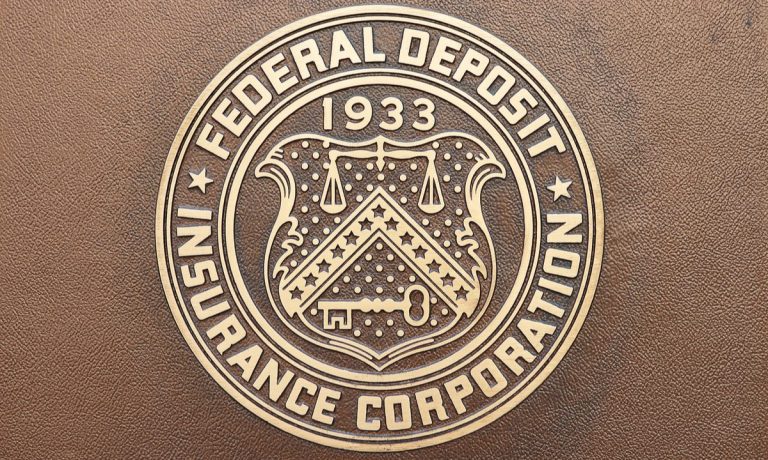
Uninsured deposits have been in the spotlight of the regulatory gaze through the past year and a half.
The failure of Silicon Valley Bank and other bouts of financial instability have called attention to these deposits and possible changes to how they’re held at banks.
Regulators seem on the cusp of taking a sharper look.
The Federal Deposit Insurance Corp. (FDIC) is seeking, through a request for information, insight from financial institutions (FIs) on deposits held at those banks, including the data on uninsured deposits that is not recorded on Call Reports.
These quarterly reports are issued by the FIs to regulators and detail a broad swath of assets and liabilities, along with bank-level operating income and expenses.
“Through this RFI, the FDIC is seeking information on characteristics that affect the stability and franchise value of different types of deposits to further evaluate whether and to what extent certain types of deposits may behave differently from each other, particularly during periods of economic or financial stress,” the FDIC said in a news release.
The commentary period will stretch out over 60 days, and the FDIC has invited commentary from insured depository institutions, depositors and “financial consumers, businesses that utilize various types of payroll and payment accounts, consumer groups, researchers, trade associations, and other members of the financial services industry,” according to a separate press release.
Details from the actual RFI noted that the bank failures of last year and “subsequent events” have renewed focus on how banks might be relying on uninsured deposits.
As for the reporting, “while banks are required to provide certain data on deposit liabilities on the Call Report, they do not report comprehensive data on the composition of insured and uninsured deposits,” the RFI said.
Generally speaking, banks with assets of $1 billion or more report the estimated total of uninsured deposits.
“A bank’s liability structure can reflect its risk-taking behavior, and information about an institution’s funding base is important in evaluating liquidity risk and interest rate risk,” the RFI said.
The FDIC seeks input on limited coverage, which would maintain the current structure of deposit insurance in which there is a finite deposit insurance limit that applies across depositors and types of accounts (which stands at $250,000 per account and has been at that level since the financial crisis of the last decade). It is also looking for input on unlimited coverage on those accounts. The FDIC also wants information on how stable different types of uninsured deposits might be and whether different/additional data on those deposits would lead to a “better” understanding of account holder behavior.
The FDIC estimated earlier this year in a separate report that at the end of 2022, uninsured deposits held by insured depository institutions totaled about $7.7 trillion, which is 43% of domestic deposits.
“When uninsured depositors took a loss, the losses were 24% from 1992 to 2007,” the FDIC said. “In contrast, from 2008 to 2022, uninsured depositors took a loss in only 6% of failures, and when they took a loss, uninsured depositor losses were 43%.”
The FDIC report and call for input from the financial services industry come at a time when there has been a spate of cease and desist orders against nonbanks (typically digital-only firms) on the grounds that they had been making false and misleading statements about deposit insurance coverage.
The call for more input on the data that is being collected, or should be collected, also should shed some light on the ways in which open banking/consumer permissioned data might be used to provide granular insight, in real time, on the deposits themselves. That data, conceivably, could also be used to tailor a proactive approach to help consumers and even corporate clients actively manage (and be educated about) their deposits.